933. Rock climber's camming device
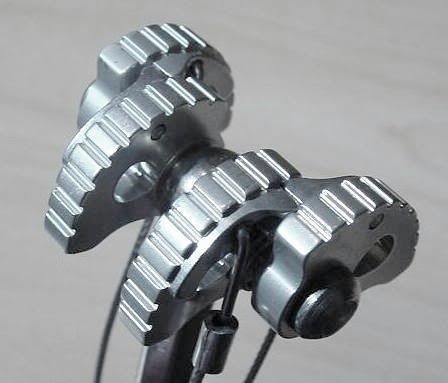
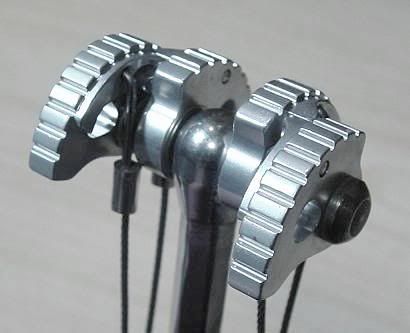
934. Microtome, used to cut a specimen into thin sections for microscope slides.
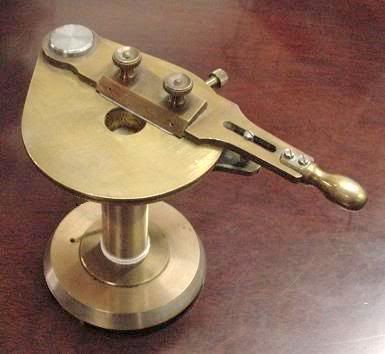
Several more photos of it:
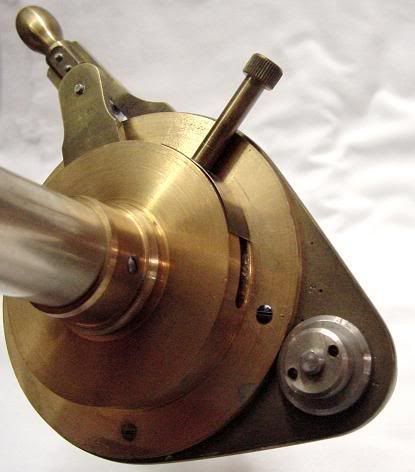
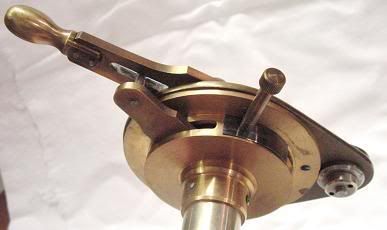
View of the bottom:
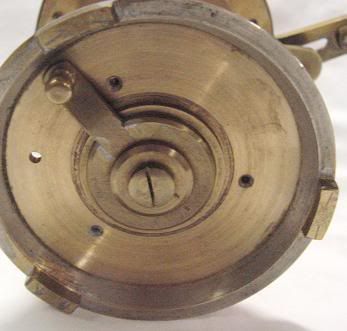
935. Ninja caltrops, or Makibishi or Tetsubishi, when I first posted these I thought that they were caltrops for puncturing car tires, but have since learned that they are escaping gear made to be used when being pursued on foot.
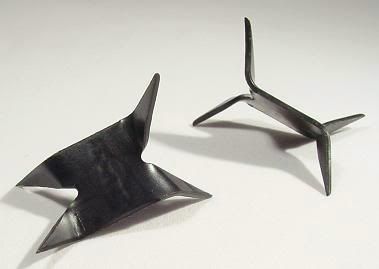
936. Pencil sharpener, each time the blade handle is pulled back it ratchets the pencil holder giving a new surface to cut.
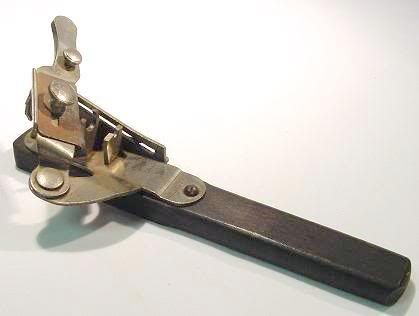
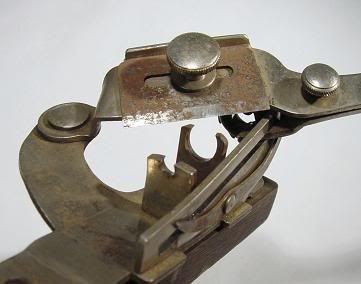
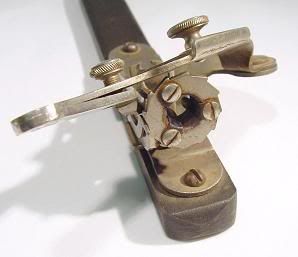
937. Columbia dictionary stand
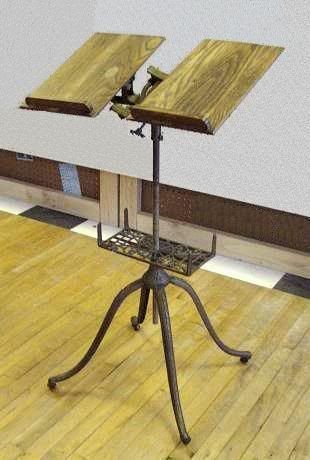
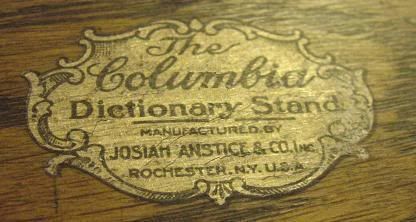
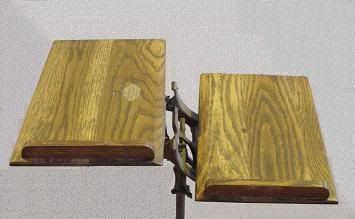
938. Hooks for moving cargo or fish at the market, the owner was told that this tool is an elephant trainer's hook, but several readers of this site have used it for other purposes:
I couldn't find any videos of the Boston Fish Pier, but someone did send me a link to a good video on Youtube where similar hooks can be seen.
Another visitor wrote:
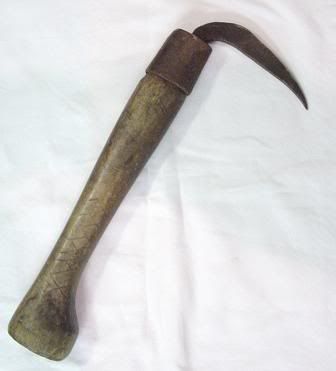
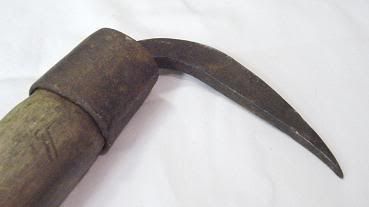
From Stan's collection
938a. I went to an auction last week where this tool was also described as being used with elephants, it's about the same length as the previous one but it's much thinner and has a smaller metal piece. Someone there told me that he thought it was actually a pickaroon for moving fish in a boat.
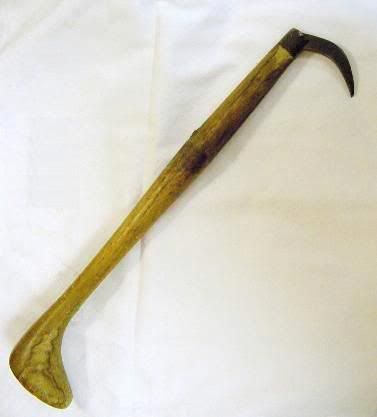
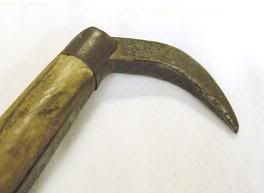
These characters were on the bottom of the handle:
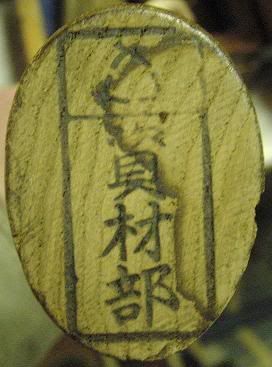
Yet another visitor sent in a translation:
Thanks to the three visitors whose comments are printed above, looks like the larger tool has more than one use, while the smaller one was most likely used for moving fish at a market.
939. Early carbon arc projector:
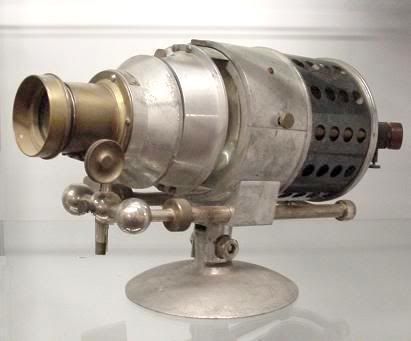
This device was marked "Mfd. by Victor Animatograph Co., Davenport, IA U.S.A." and "Crown Optical Co., Rochester, New York".
Last week's set is seen below, click here to view the entire post:
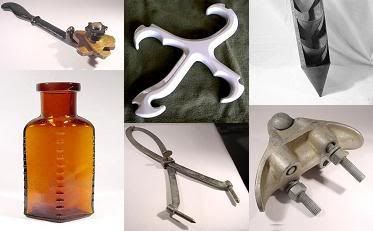
More discussion and comments on these photos can be found at the newsgroup rec.puzzles.


934. Microtome, used to cut a specimen into thin sections for microscope slides.

Several more photos of it:


View of the bottom:

935. Ninja caltrops, or Makibishi or Tetsubishi, when I first posted these I thought that they were caltrops for puncturing car tires, but have since learned that they are escaping gear made to be used when being pursued on foot.

936. Pencil sharpener, each time the blade handle is pulled back it ratchets the pencil holder giving a new surface to cut.



937. Columbia dictionary stand



938. Hooks for moving cargo or fish at the market, the owner was told that this tool is an elephant trainer's hook, but several readers of this site have used it for other purposes:
I can tell you from first hand experience that item #938 is a hook for moving large fish. I used one on the Boston Fish Pier every workday for the last 17 years. And I can assure you that there are more fishmongers in Boston alone than there are even elephants. I'm pretty sure you can still get them from Morty the Knife Man too.
I've seen both sizes of this tool, the larger one allows you to use two hands. They are used very simply, and usually only on the larger pelagic species, for instance swordfish and tuna. The hook end is stuck in the holes that are left after the pectoral fins are removed, or the meat in the tail end. The goal is to move the fish without destroying any meat. Less meat = less money. Other examples can be found, most are now made of food safe PVC, and look more "T" shaped.
I couldn't find any videos of the Boston Fish Pier, but someone did send me a link to a good video on Youtube where similar hooks can be seen.
Another visitor wrote:
I don't think that the tool pictured in 938 has anything to do with elephants, though similar looking tools are used in that application. Here's a link that shows various types of elephant hooks. The second tool picture, 938a, has Chinese or Japanese writing on the butt of the handle, and Asian elephants are predominantly from areas where Chinese writing would be unusual to find.
My main reason for believing the tool had another origin and purpose is because I owned one that was identical to the tool pictured in 938, except for the cross-hatching on the handle. I'd picked it up when I bought an estate tool collection. The collection has tools that I'm still trying to figure out, but all of them are of American or English origin. The hook had a tag that said it was a pickaroon, used for handling smaller logs - maybe as in firewood as someone else suggested. Here's Lee Valley's version.
I demonstrated some antique tools at a local country fair a couple of years back, and the pickaroon was a favorite. It was _fun_ to give a quick flick and have it stick into the end of a log. Made manhandling a log a breeze. I really don't think you could design a better tool for that application.


From Stan's collection
938a. I went to an auction last week where this tool was also described as being used with elephants, it's about the same length as the previous one but it's much thinner and has a smaller metal piece. Someone there told me that he thought it was actually a pickaroon for moving fish in a boat.


These characters were on the bottom of the handle:

Yet another visitor sent in a translation:
In Chinese, the inscription says "Zi Cai Bu".
Chinese does not directly translate into English, but roughly; Zi is related to words meaning 'capital' or 'information'; Cai is related to 'materials', and 'Bu' means 'department'. "Zi Cai Bu" probably means the tool belonged to an official materials and maintenance department, possibly at a large organization like a construction firm or university.
Thanks to the three visitors whose comments are printed above, looks like the larger tool has more than one use, while the smaller one was most likely used for moving fish at a market.
939. Early carbon arc projector:

This device was marked "Mfd. by Victor Animatograph Co., Davenport, IA U.S.A." and "Crown Optical Co., Rochester, New York".
Last week's set is seen below, click here to view the entire post:

More discussion and comments on these photos can be found at the newsgroup rec.puzzles.


0 Comments:
Post a Comment
<< Home